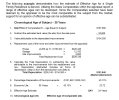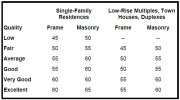J Grant
Elite Member
- Joined
- Dec 9, 2003
- Professional Status
- Certified Residential Appraiser
- State
- Florida
Agree. Most clients on most assignments are lot looking for a precise calculation of effective age (if they are, then fulfill that ), but most just want to know if the subject is maintained vs updated vs neglected and how that plays out in the effective age/condition. Does what the appraiser reports make sense? If the photos show no updates on a 40 year old house but the appraiser gives it an effective age of 5 years and a C3 or C 2 condition, it is either misleading or incompetency, either way it affected assignment results.What the lender wants to know is if its okay to offer a 30yr mortgage at SFR rates/terms on this property. Or are they inadvertently making a land loan?
The client uses effective age in part to see the $ contribution of improvement relative to land value. Appraisers estimate it for the same reason - HBU -( is it worth more as vacant land) for comp comparisons wrt their relative effective age , for cost approach etc.


